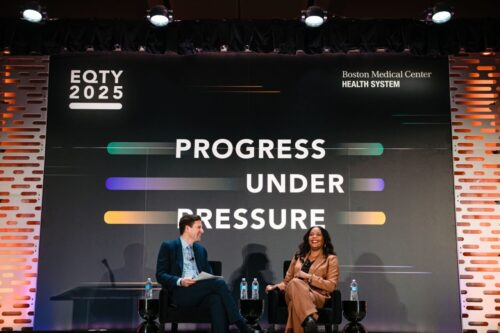Building Your Organization's Capacity for Mindfulness
June 1, 2020
By Lisa Kelly Croswell, Susannah Rowe, MD, MPH, and Gabrielle Farquhar, MPH

Getty Images
Key learnings for implementing and scaling mindfulness across a large organization from a pilot program that cut burnout rates in half.
Mindfulness has become a fixture of executive coaching and corporate wellness programs, as organizations of all kinds seek to reduce stress and boost performance and productivity. More than half (52%) of the organizations included in an annual survey of large employers had mindfulness classes in place or in the works in 2018 — up from 36% the year before — and another sizable chunk (23%) were considering it for 2019. This surge in popularity is a welcome trend for anyone who has experienced the power of mindfulness firsthand, but as more organizations jump on board, it’s important that we prevent the positive trend from becoming a fad.
Mindfulness training, which seeks to cultivate the practice of being present and attentive without judgment, shouldn’t be treated as just another wellness offering. The skills and perspective the training provides are essential ingredients for a healthy, engaged, and productive workforce, and they must be embedded in the culture of an organization to be effective over time. To realize the full benefits, employers must integrate mindfulness into their strategy and goals and scale it across their organizations in a sustainable way.
Approaching mindfulness strategically is especially critical for healthcare organizations. Physician burnout has become a full-blown crisis. More than 40% of physicians report symptoms including emotional exhaustion and depersonalization, citing factors such as long hours and the constant demands of electronic health records. The transition to value-based care has only added to organizational stress, as health systems work overtime to create efficiencies, adapt to new payment models, and think differently about how to care for their patients and employees.
In 2018, with an eye on these trends, we embarked on an ambitious plan to bring mindfulness training to every corner of the Boston Medical Center health system, which is made up of the largest safety-net hospital in New England, a health insurance plan covering over 420,000 lives, and more than 8,000 employees. As a team of HR leaders and clinicians, we believe mindfulness is closely aligned with our organization’s needs and goals. We have made physician vitality an institutional priority, and we understand the direct impact that employee engagement has on patient experience and quality of care. Moreover, we are doubly invested as 60% of our employees are also our patients.
The cornerstone of our initiative is an eight-week program known as mindfulness-based stress reduction (MBSR). Adapted from a curriculum developed at the University of Rochester Medical Center to fight burnout among primary care physicians, the course includes 60 to 90 minutes of weekly group discussions, guided meditations, and gentle yoga and movements, as well as home-based practice.
We piloted the program with three cohorts of employees: physicians and clinical staff, hospital and health plan business leaders, and facilities and support services team members. Burnout rates were cut in half over the eight weeks, dropping from 52% to 26% among clinicians and from 27% to 13% among business leaders (as measured on the same 10-item scale used in many national surveys). Just as important, in post-course surveys the participants reported feeling more engaged, more professionally fulfilled, and having an increased capacity to drive results. The pilot was so successful that we have ramped up our efforts and will be training hundreds more employees in 2020.
How to implement and scale mindfulness across a large organization
The benefits of mindfulness on employee wellness and engagement have been well documented, but relatively little has been written on how to implement and scale mindfulness across a large organization. Filling this gap is important to the adoption and long-term success of mindfulness in the workplace and its subsequent outcomes. Although we are still early in our own journey to bring mindfulness to our health system, we have identified some key lessons and principles that we believe are essential for any organization.
1. Blaze the trail with senior leaders
We began with the most senior leaders in our organization — directors, VPs, and above — and asked them not only to participate but also to recruit their colleagues and teams. The clinicians and business leaders in our first two cohorts are a busy, data-driven, and science-minded bunch, and many were initially skeptical that mindfulness would live up to its billing. By the end of the course they had become champions, with more than 90% saying they’d recommend the course to a colleague.
Mindfulness must be a top-down initiative.
“I did not understand how a few hours a week for a few weeks could make such profound changes, but it has,” one clinical leader wrote in a post-course assessment. “It’s like I have a flashlight to light my way that is always in my pocket.” In the stratified world of an academic medical center, an endorsement like this from a respected senior leader carries tremendous weight.
Mindfulness must be a top-down initiative. If leaders encourage the rank and file to attend trainings but don’t participate themselves, employees will view mindfulness as little more than a feel-good initiative. Worse, if managers don’t create time for training during the workday, it will be perceived as an ask and a burden rather than an organizational and professional development priority. Stress reduction will become just another source of stress.
2. Make it practical and relevant
One-off trainings and drop-in programs that provide a brief respite from the status quo aren’t enough. As the physician’s flashlight analogy suggests, the goal of mindfulness training is not simply to de-stress in the moment but to develop lasting tools and skills that can be revisited anytime.
“It’s like I have a flashlight to light my way that is always in my pocket.”
In our course we teach concrete ways of incorporating mindfulness into the culture and routines of the workplace. The usual sprint from one meeting to the next, for instance, can become a brief walking meditation if you pocket your phone and focus on each breath and step. Difficult conversations become an opportunity to build positive relationships if you practice appreciative inquiry and focus on what’s right, rather than wrong.
Roughly 90% of the clinical leaders at BMC indicated they would continue their mindfulness practice after the course and apply it in their day-to-day. Follow-up surveys and anecdotal feedback bear that out. Two months after the course, rates of burnout and professional fulfillment remained at their positive post-course levels.
3. Include everyone
To achieve meaningful goals such as increased productivity and retention, mindfulness must be accessible and relevant at every level of an organization. This is easier said than done, as fulfillment, stress, and burnout can look very different across roles and job functions. The business leaders in our pilot, for instance, may have been stressed and short on time, but they had burnout rates nearly half those of the physicians.
Scale isn’t just about volume, but about meeting employees where they are.
Scaling mindfulness training requires an inclusive and flexible approach. The third cohort in our pilot was drawn from support services — a department that includes shift workers in housekeeping, food services, and patient transport. The core course content was generally the same, requiring only a few minor adjustments. We sought to accommodate the group’s 24/7 work schedules, wide range of experiences, and a variety of primary languages such as Spanish, Haitian Creole, and Portuguese. Given what can often be a sense that such positions are less valued, we encouraged reflections and written responses to prompts such as, “When is the last time you felt you made a meaningful difference, either at work or at home?”
We are now taking steps to make our training even more accessible, by offering daytime and evening sessions, one-day immersions (in addition to the eight-week course), livestreams, and video archives. Scale isn’t just about volume, but about meeting employees where they are.
4. Measure your impact
The impact of mindfulness is subjective and hard to quantify, but that doesn’t let organizations off the hook from measuring it in a rigorous way. Quite the opposite. Especially at a low-margin institution like ours where every dollar is precious, securing ongoing resources for mindfulness programs requires deliberate and thoughtful measurement of the return on investment.
We’ve approached this in two ways. In the short term, we’ve aligned our course curriculum and assessments to established institutional priorities — physician vitality and employee engagement — with clear metrics and historical data. At the same time, we’ve built a framework for measuring our long-term impact and cost-effectiveness. As our sample size grows, we’ll be looking at outcomes including organization-wide engagement surveys, retention data, and employee healthcare costs. We’ll also continue to develop new assessment tools and approaches tailored to the needs of each cohort.
We believe strongly that mindfulness training should become a core element of our leadership and professional development agendas. Our end goal is to make mindfulness a true part of our culture and capabilities for both a healthy workforce as well as healthy outcomes of our patients and members. Achieving this will require the long, careful work of connecting with our employees and demonstrating the business case along with continued focus on our organizational mission of exceptional care, without exception.
Authors’ Note In crisis there is opportunity. The Mindfulness team felt an immediate call to action as COVID-19 began directly impacting Boston Medical Center. We began by pivoting our weekly “Mindful Moment” digests to daily notes of encouragement and offering twice daily virtual drop-in meditations and mindful movement sessions to BMC-BU employees. In a time where social distancing is the new normal, we felt mindfulness was now more important than ever and was a platform for calm and connection. It was remarkable to witness our email subscriber list grow from 70 to 450 people — a six-fold increase — and to meditate with so many familiar and unfamiliar faces in less than 6 weeks. These numbers tell us that as the workplace continues to navigate this era of uncertainty, more organizations and their employees would welcome and benefit from a similar intervention to the one described above.


